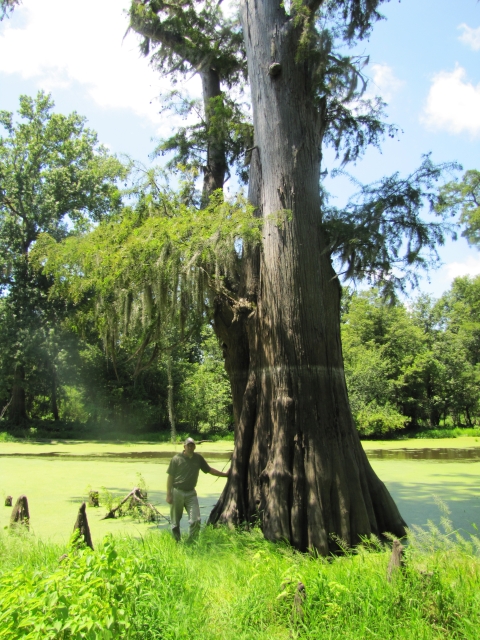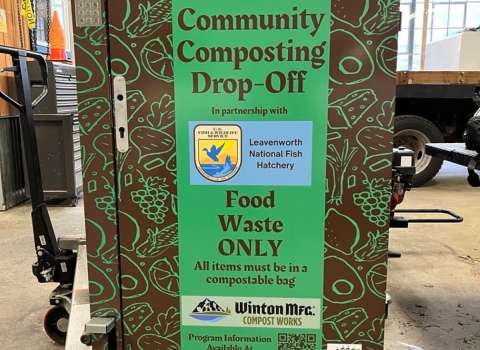For hundreds of years, the Mississippi Delta has been prized as a wildlife paradise with some of the country's most productive habitat. So, in 2017, when Anderson-Tully Company (ATCO), a lumber company, began divesting its land holdings – including property in the coveted Delta – the Mississippi Department of Wildlife, Fisheries, and Parks (MDWFP) jumped on the opportunity.
At nearly 18,000 acres, this was a portion of the largest land divesture. It wouldn’t come cheap. The spot that MDWFP had its eyes on cost $35 million. Where would the money come from? Excise taxes paid by the manufacturers of firearms, ammunition, and archery equipment via the Wildlife Restoration Act of 1937, apportioned back to the state fish and wildlife agencies each year for habitat and species management, research, hunter education, facility construction, and land acquisition.
The U.S. Fish and Wildlife Service administers the Wildlife Restoration Program and receives proposals from states, then approves worthy projects for funding. The apportioned money covers 75% of the estimated project cost. The state must find a match for the remaining 25%.
The MDWFP proposed the project and was approved using the appraised value of two other already owned properties as the 25% match, expanding the acreage protected for conservation and recreational access by another 5,000 acres. The federal funds would be spread over five years. Unable to purchase all 18,000 acres at once, the plan was for the state to initially secure11,000 acres. The Nature Conservancy, a conservation nonprofit, would obtain the remaining 7,000 for MDWFP to buy later.
The MDWFP acquired the land and today the Phil Bryant Wildlife Management Area (WMA) is now public land where one can fish, hunting, trap, hike, and bird. Phil Bryant WMA joins the nearby 12,000-acre Mahannah WMA, also a former ATCO property, bringing the statewide WMA area to 685,000 acres—all public land.
Conserving the Delta
Phil Bryant WMA is home to many vulnerable habitats including bottomland hardwood forests, ephemeral ponds, oxbows, cypress sloughs, and more. Inclusion as a WMA means habitat conditions can be improved, managed, and protected from conversion to alternative land uses like development or agriculture.
The area also has the potential to lead the way for several conservation projects. The MDWFP hopes to learn more about what species the various habitats harbor. Various bat species, alligator gar, and even alligator snapping turtles may call the place home. Now that the state has unfettered access, there are abundant opportunities for research to learn more about the WMA’s habitats.
Already, the state monitors neotropical migratory birds here and now has its sights set on wild turkeys. The wild turkey population in the South Delta region of Mississippi has markedly declined in the last decade. The property is subject to flooding, but in drier years, and with such a large complex, there is great potential to help boost the local population.
Of course, the WMA is also open for hunting and other outdoor recreation.
The hunting heritage of Phil Bryant WMA runs deep. President Theodore Roosevelt himself hunted there. Teddy even harvested a bear on the property at Hooker’s Ridge, just a few miles from where the teddy bear legend was born.
The site is home to Mississippi’s first formal hunting lease. On April 1, 1950, Ten Buck Hunting Club secured a 20-year lease from ATCO for just $1. But there was one big problem – no access. Unlike today, there were no roads you could use to get to the hunting club. Hunters traveled by steamboat to camp, to be picked up after a week of comradery in the great outdoors.
Today, the Phil Bryant WMA is divided into four units. Each unit offers a different hunting opportunity. The Buck Bayou unit boasts its popular duck holes and chances to bag a deer. For archery enthusiasts, the Goose Lake Unit has been set aside. And for youth and disabled hunters – the Ten Point Unit is all for you.
Then, there’s the Backwoods Unit. Its unique in that it offers the hunting camp tradition of the area’s past. The unit is part of a quota hunt opportunity. If drawn in the lottery, a group of four hunters, plus kids, can set up camp and enjoy the entire unit by themselves.
Land in the Mississippi Delta isn’t a dime a dozen. Being able to purchase and maintain this precious area is a huge success. Maybe MDWFP will again use Wildlife Restoration money and add to their WMA treasure.






